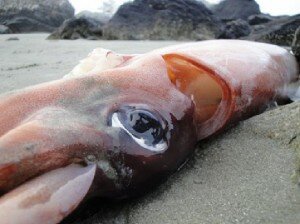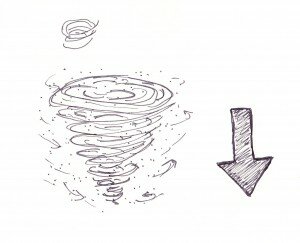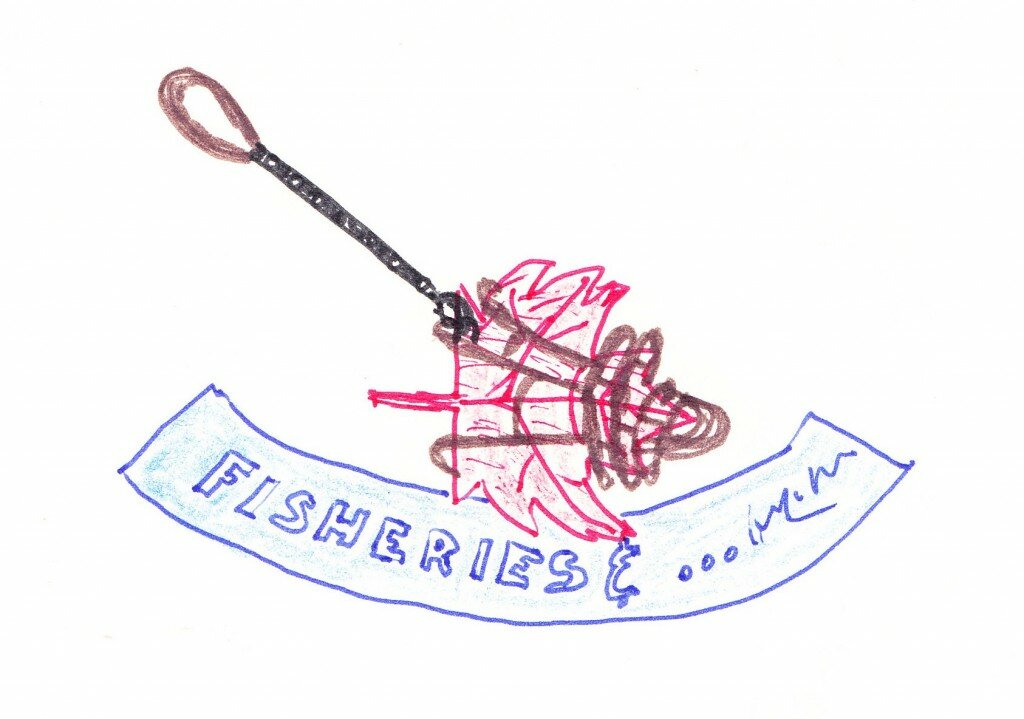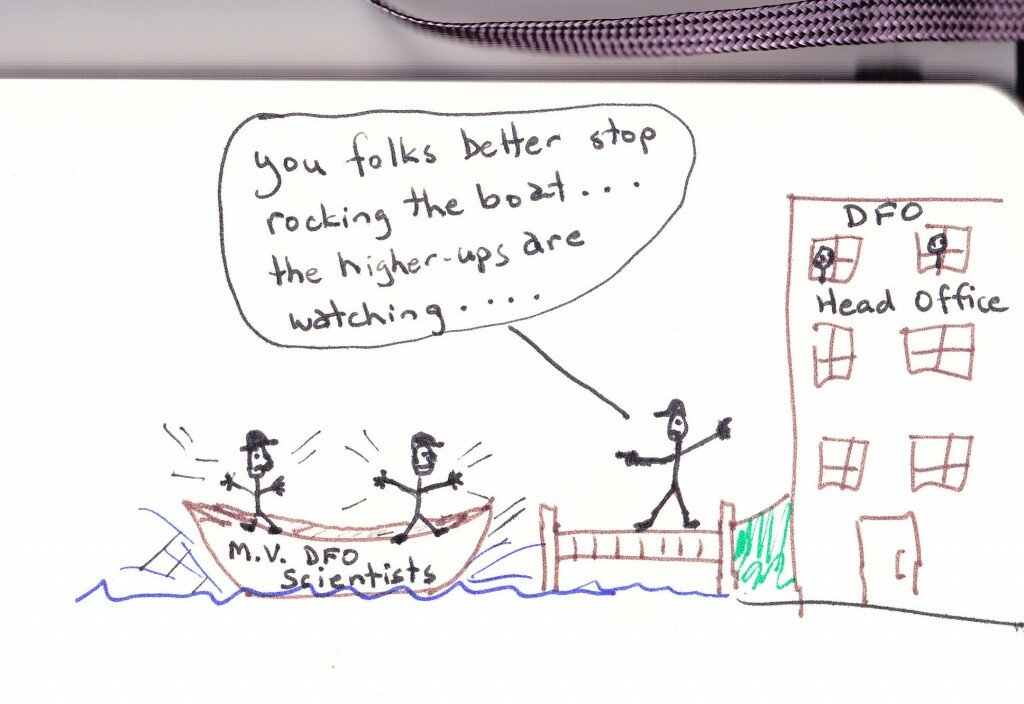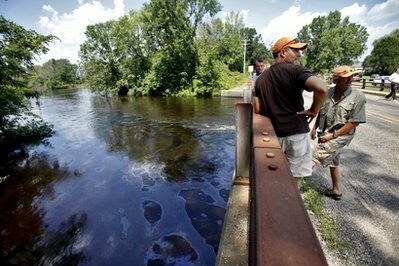The other day I listened in to the and (component of Commission) conference call updates on the status of Fraser River sockeye. On the decent news front… it appears that one of the “groups” of sockeye is returning higher than pre-season forecasts.
The “Early Summer” sockeye run comprised of various upper river stocks had pre-season forecasts of just over 780,000 and now in-season estimates are suggesting about 950,000 sockeye. Some conservation measures were proposed on the “Early Summers” to protect some of the more endangered stocks within that group, for example the sockeye that return to the Bowron River east of Prince George, BC.
You know, the same Bowron River that sports what was once referred to as one of the biggest contiguous clearcuts on the planet… In my younger days, I spent the better part of several treeplanting seasons in the Bowron Valley Area trying to kick start the reforestation process so that another of the great human monuments that can be seen from space might begin to regenerate.
The Upper Bowron Spruce Beetle Outbreak: A Case History
Check out the . At the peak of the madness in the early 80s it is estimated that 700 loaded logging trucks a day were leaving the Bowron.
Coordinated harvesting operations removed 15 million m3 [a m3 — cubic metre — of wood is approximately one telephone pole] green attacked timber between 1981 and 1987. This amount of raw material could produce enough lumber to build 900,000 average 1,200 square foot homes! Logging trucks, with radiator caps touching the red flag of the truck in front, carrying 15 million m 3 of logs would stretch for 5,300 miles.
But, alas, there’s probably no connection between the dwindling Bowron sockeye and the intense deforestation in that area in the 70s and 80s… (however, I digress…)
_ _ _ _
On the conference call, I am quite sure that I heard the Chief Biologist from the Pacific Salmon Commission suggest he had no recommendations on opening a fishery just yet because the “Summer” group of Fraser sockeye appeared to be running late. The “Summers” had a pre-season forecast of just over 2.6 million. This ‘group’ is comprised of the famous runs to the Quesnel River (e.g. Horsefly and Quesnel Lakes, east of Williams Lake) and the Chilko run, west of Williams Lake, plus two up-river stocks in the Nechako River, northwest of Prince George.
If the “Summers” return at pre-season forecasts then there will most likely be some commercial fishing opportunities — the first in over three years. However, with the “Summers” running late.
At least that’s the hope…right. You know how it is when you get stood up for a date. For the first little while you think… “oh, she’ll be here soon, she’s just running late…” And then you move to: “oh gee, I hope she’s OK and nothing happened…”. Then reality begins to set in: “shit, she’s not coming…” Then disappointment and anger… rejection.. and so on.
Ok, I’m not speaking from experience, just hypothesizing that that’s what it feels like…
The point being, that I seem to remember last year this thought of: “gee… they must just be running late…” Soon to be followed by some slight concern… then panic… then denial… then a judicial inquiry… then burying the judicial inquiry in hundreds upon hundreds of thousands of documents…
You probably get my point.
So, what I heard suggested was, maybe we shouldn’t go fishing on the “Early Summers” yet because that would mean we might start hitting “Summers” and we don’t have enough information for an in-season estimate on the “Summers” yet. So we better hold off for now.
I’m positive that something to that effect was said by the fisheries scientists in the group. (and please correct me if I’m wrong, however, I’ve also had that confirmed by one individual within Fisheries and Oceans)
See, and something like that must have been said because when you look at the Pacific Salmon Commission news release for Tues, Aug. 3 it states:

Pacific Salmon Commission news release
So no in -season “Summer” forecasts for a few weeks yet. And as a result:

Pacific Salmon Commission
.
Ok, that seems pretty definitive. “Remain closed to fishing”
But then on Wens, Aug. 4th I receive a press release from the Department of Fisheries and Oceans (DFO) dated Aug. 3rd:
Fishery Notice – Fisheries and Oceans Canada
Subject: FN0587-Salmon: Fraser River Sockeye Update – August 3 – Areas 11 to 29
…
Based on the observed migration of Summer-run sockeye through the marine approach routes to-date, assessments of abundance are less than expected if their arrival timing is similar to pre-season expectations. Based on later run timing for Early Stuart and Early Summer runs, Summer-run stocks may be migrating later than expected but it is too early to confirm run size.
Proportions of Summer run stocks are approximately 30-40% of marine test fisheries catches. The estimated escapement of Summer-run sockeye past Mission through August 2 is 218,000 fish.
The following fisheries are planned:
Licence Area B seine will open daily from 6 AM to 9PM on Thursday, August 5, and Friday, August 6, in portions of Management Area 12 and 13.
Licence Area D gill net will open 6 AM to 3PM in portions of Management Areas 11, 12 and 13.
And so… the “theory” is that these openings are targeting “Early Summers” not “Summers”.
This is the justification passed along to me anyways… yet if one looks at the test fishing scale sample information it appears that there could be as high as 30%-40% “Summers” in the areas (e.g. Area 12 and 13 — near Campbell River on Vancouver Is.) — as pointed out in DFO’s own press release.
So, even though DFO’s own press release suggests there is no in-season estimate of “Summers” (and that they are just “late”) and the Pacific Salmon Commission says they don’t have enough information to predict “Summer” sockeye run size, and that the PSC suggests that Canadian waters “remain closed to fishing”.
…There are commercial nets in the water right now as I type, catching Fraser sockeye.
Makes sense to me… does it make sense to you?
_ _ _ _
Maybe everyone is just so eager to prove how “sustainable” the Fraser sockeye fishery is after the Marine Stewardship Council (MSC) .
Curiously, the MSC defines the precautionary approach as (and it’s a mouthful):
Precautionary approach – A set of measures and actions, including future courses of action, which ensures prudent foresight, reduces or avoids risk to the resources, the environment, and the people, to the extent possible, taking explicitly into account existing uncertainties and the potential consequences of being wrong.
Oh yea…
how do you define precautionary approach?
Does it include opening purse seine fishing opportunities on limited information and unavailable in-season population estimates?
Does it include opening fishing opportunities while there is a judicial inquiry (Cohen Commission) into declines on Fraser Sockeye?
I do find it remarkable that the Department of Fisheries and Oceans suspended all fisheries aspects of First Nation Treaty negotiations in B.C. with the justification that we must wait until Justice Cohen releases his findings…
Yet, DFO still thinks that their ability to “manage” Fraser sockeye is acceptable… hmmmm.
Who’s in charge here?




